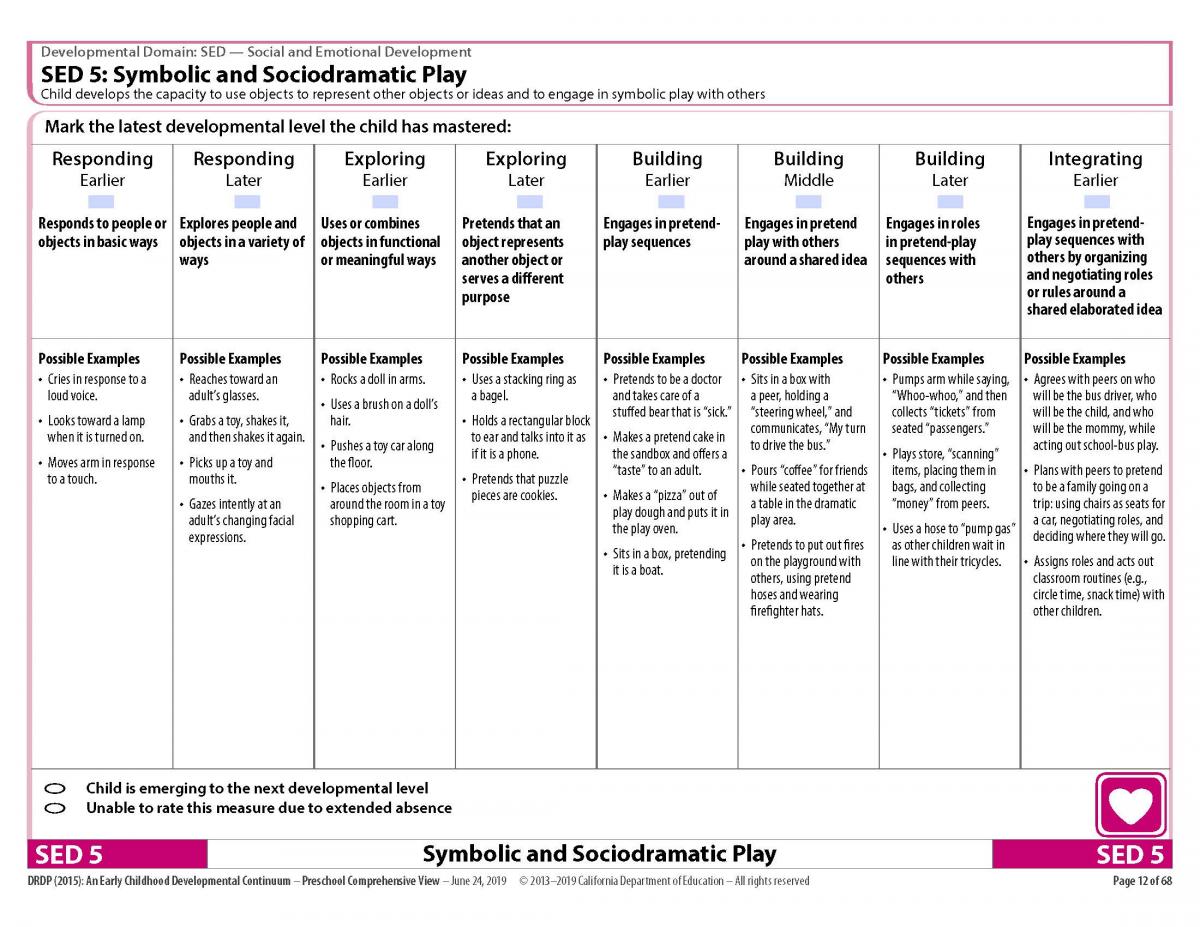Definition: Child develops the capacity to use objects to represent other objects or ideas and to engage in symbolic play with others
 View examples of the developmental levels for SED Measure 5 below: Responding Earlier, Responding Later, Exploring Earlier, Exploring Later, Building Earlier, Buidling Middle, Building Later, Integrating Earlier
View examples of the developmental levels for SED Measure 5 below: Responding Earlier, Responding Later, Exploring Earlier, Exploring Later, Building Earlier, Buidling Middle, Building Later, Integrating Earlier
Note: For young children, learning is an integrated experience. The examples below may include multiple areas of learning and development.
Responding EarlierResponds to people or objects in basic ways Possible Examples
| Source: California Department of Education. 2009. California Infant/Toddler Learning and Development Foundations Series. California Early Learning Videos. |
Responding LaterExplores people and objects in a variety of ways Possible Examples
| Source: California Department of Education. 2009. California Infant/Toddler Learning and Development Foundations Series. California Early Learning Videos. |
Exploring EarlierUses or combines objects in functional or meaningful ways Possible Examples
| Source: California Department of Education. 2009. California Infant/Toddler Learning and Development Foundations Series. California Early Learning Videos. |
Exploring LaterPretends that an object represents another object or serves a different purpose Possible Examples
| Source: California Department of Education. 2009. California Infant/Toddler Learning and Development Foundations Series. California Early Learning Videos. |
Building EarlierEngages in pretend- play sequences Possible Examples
| Source: California Department of Social Services. 2016. |
Building MiddleEngages in pretend play with others around a shared idea Possible Examples
| Source: California Department of Social Services. 2016. |
Building LaterEngages in roles in pretend-play sequences with others Possible Examples
| Source: California Department of Social Services. 2016. |
Integrating EarlierEngages in pretend- play sequences with others by organizing and negotiating roles or rules around a shared elaborated idea Possible Examples
| Source: California Department of Social Services. 2016. |
Return to DRDP Measure Video Examples